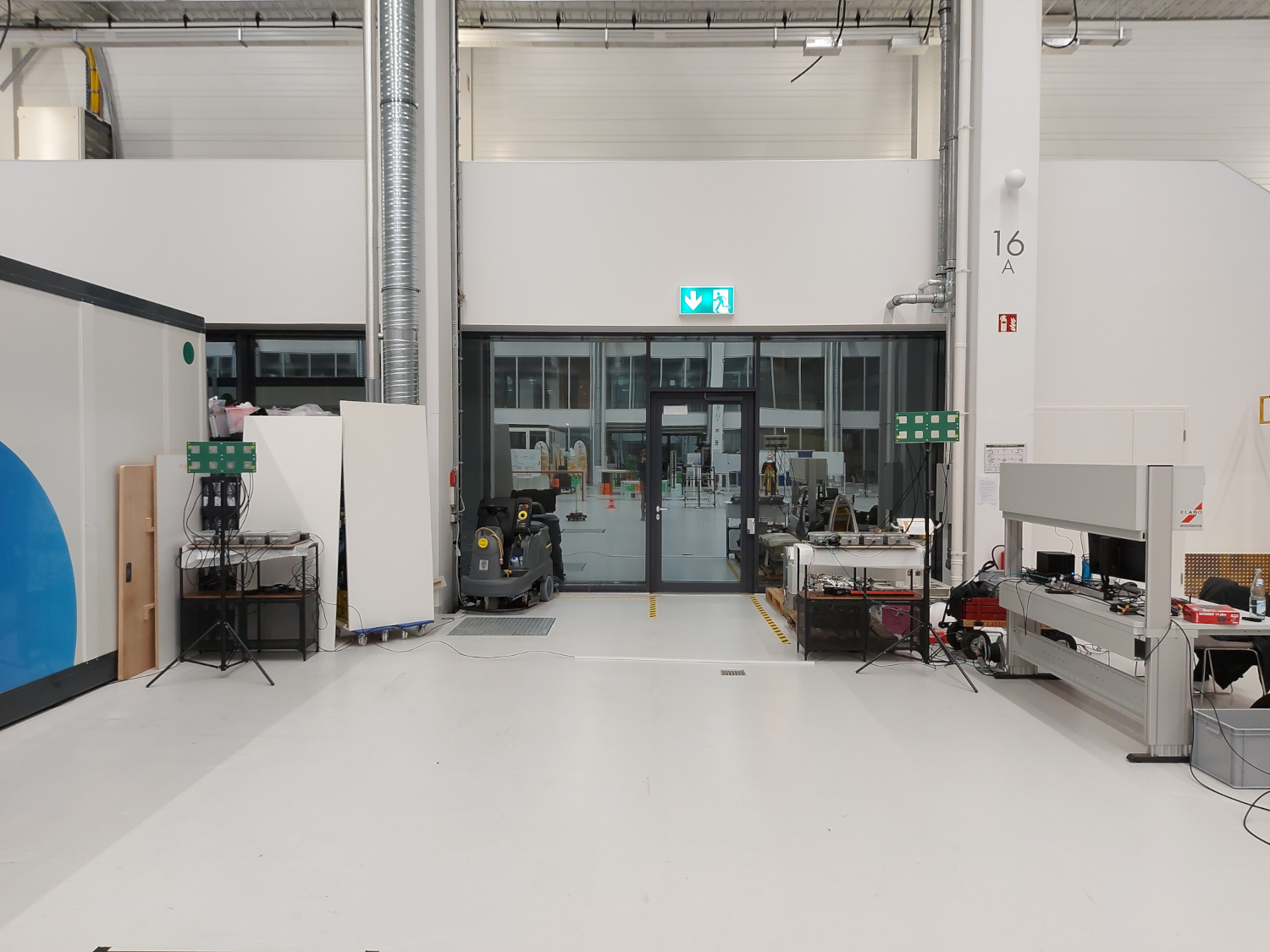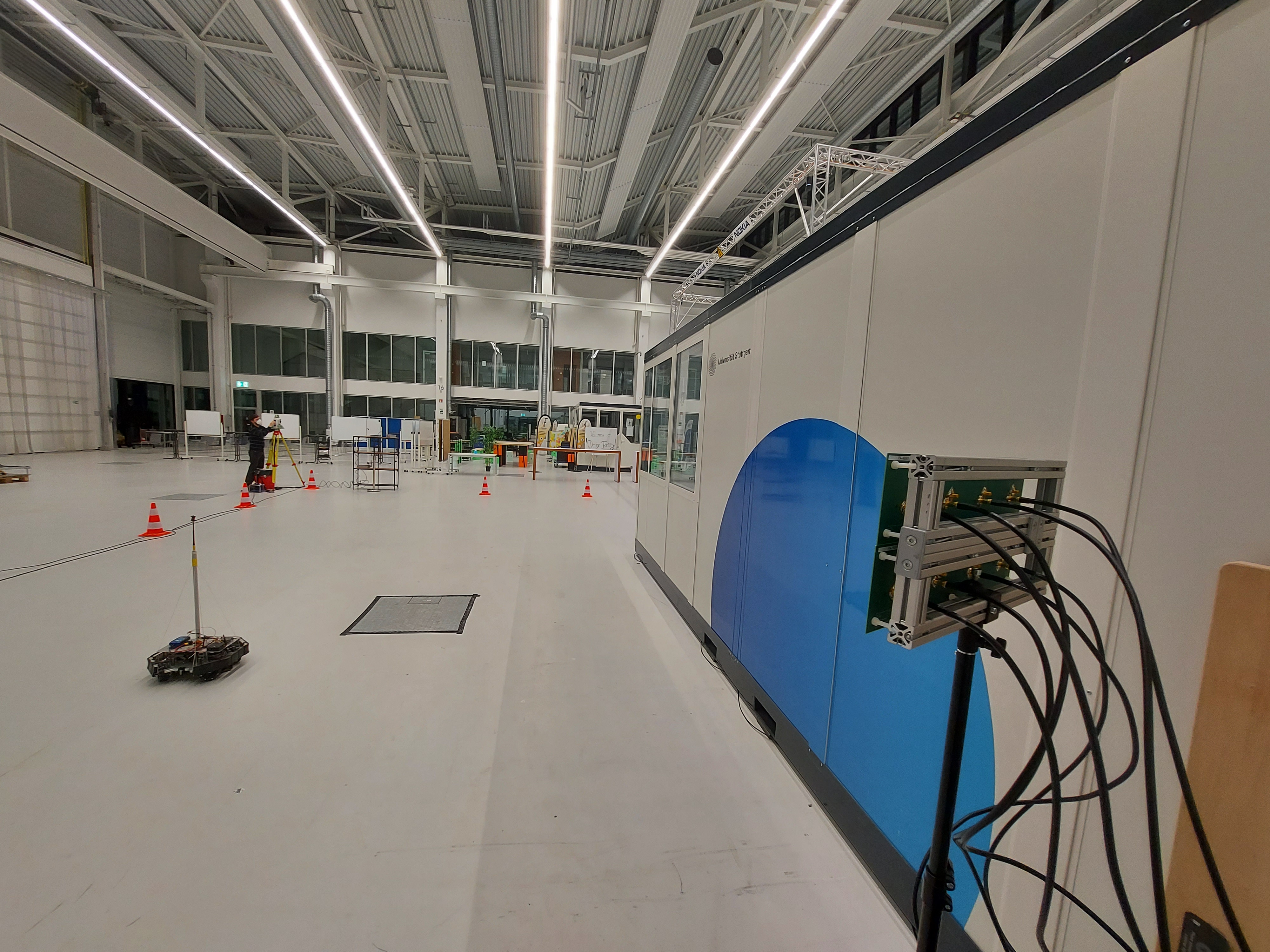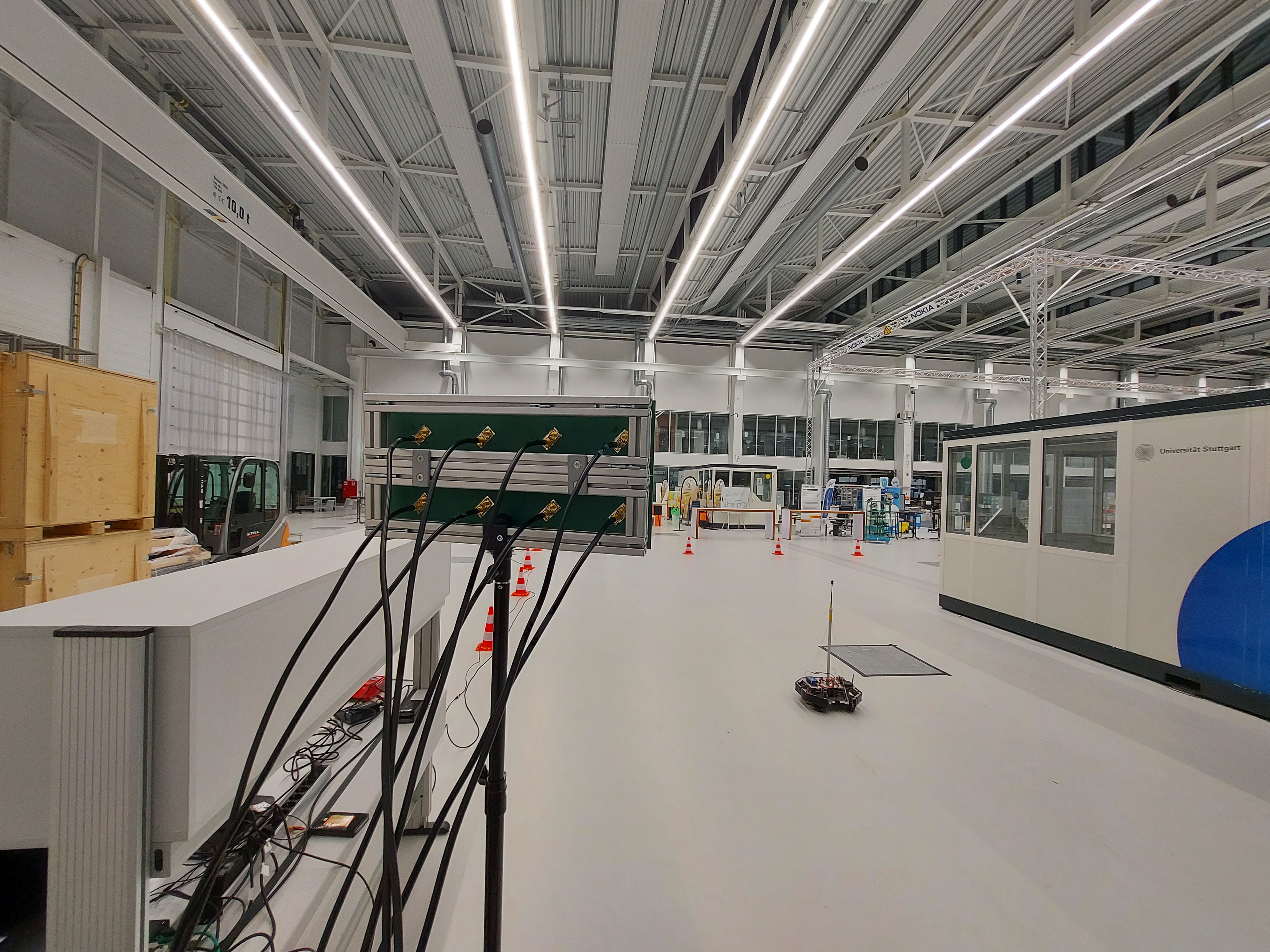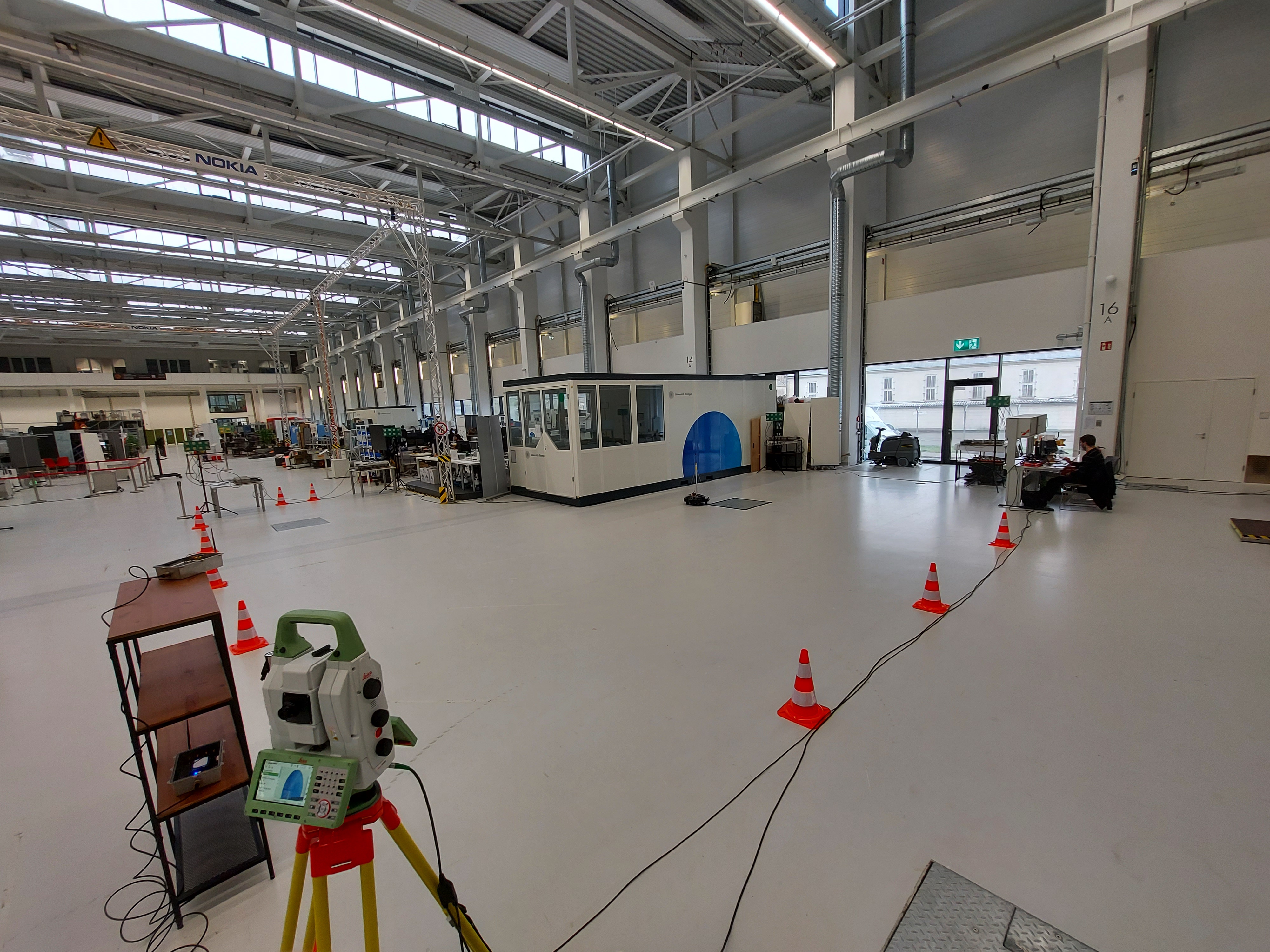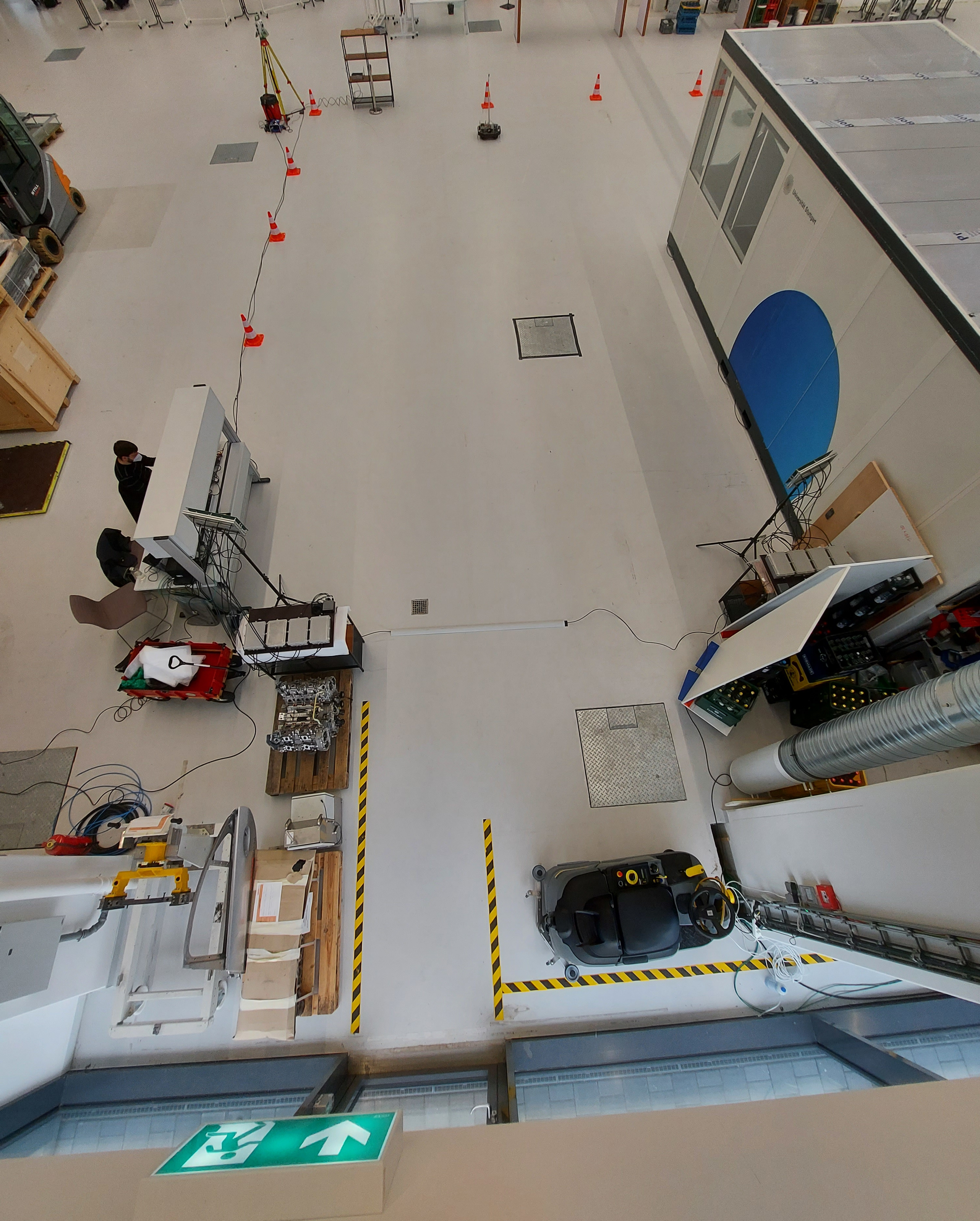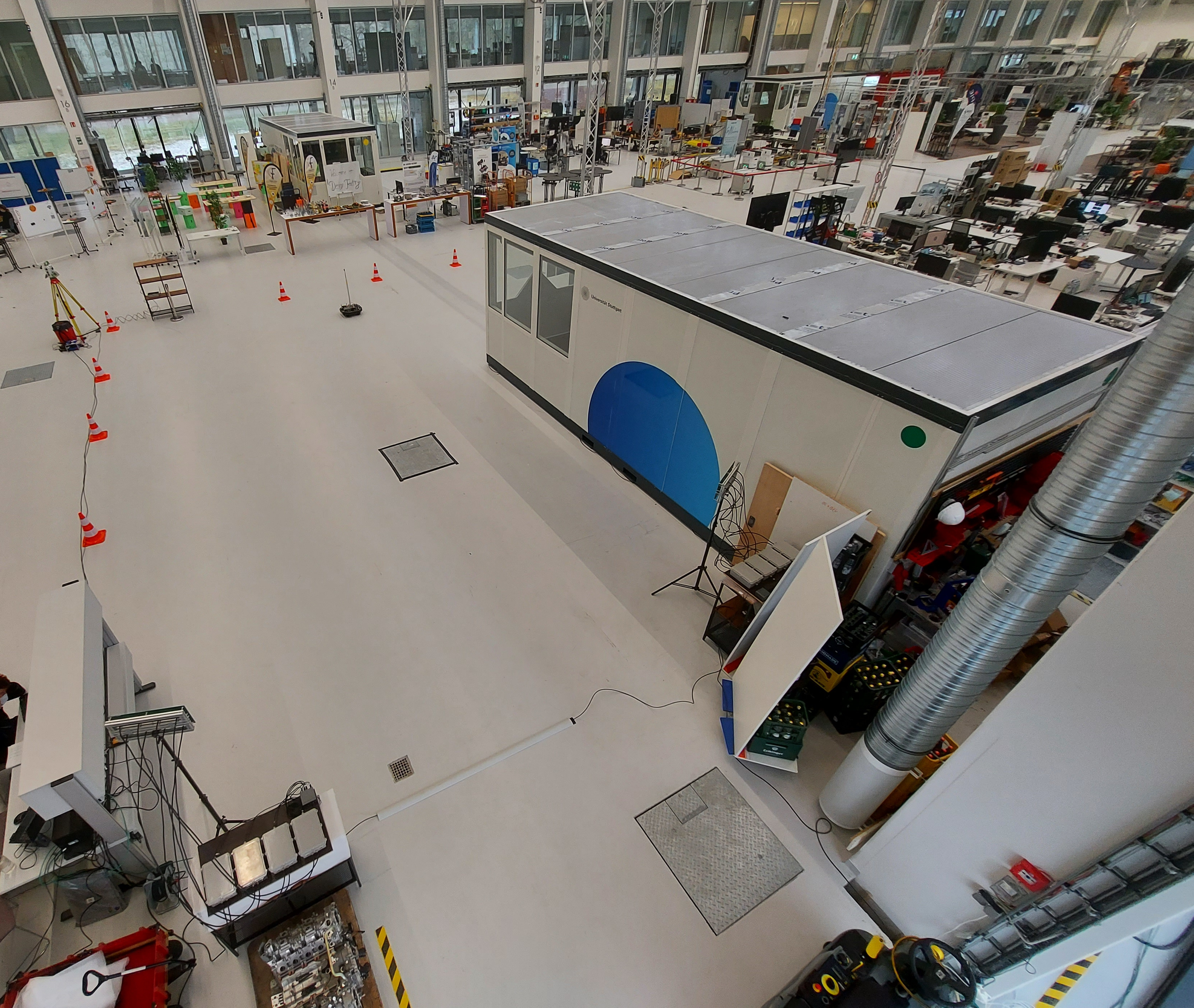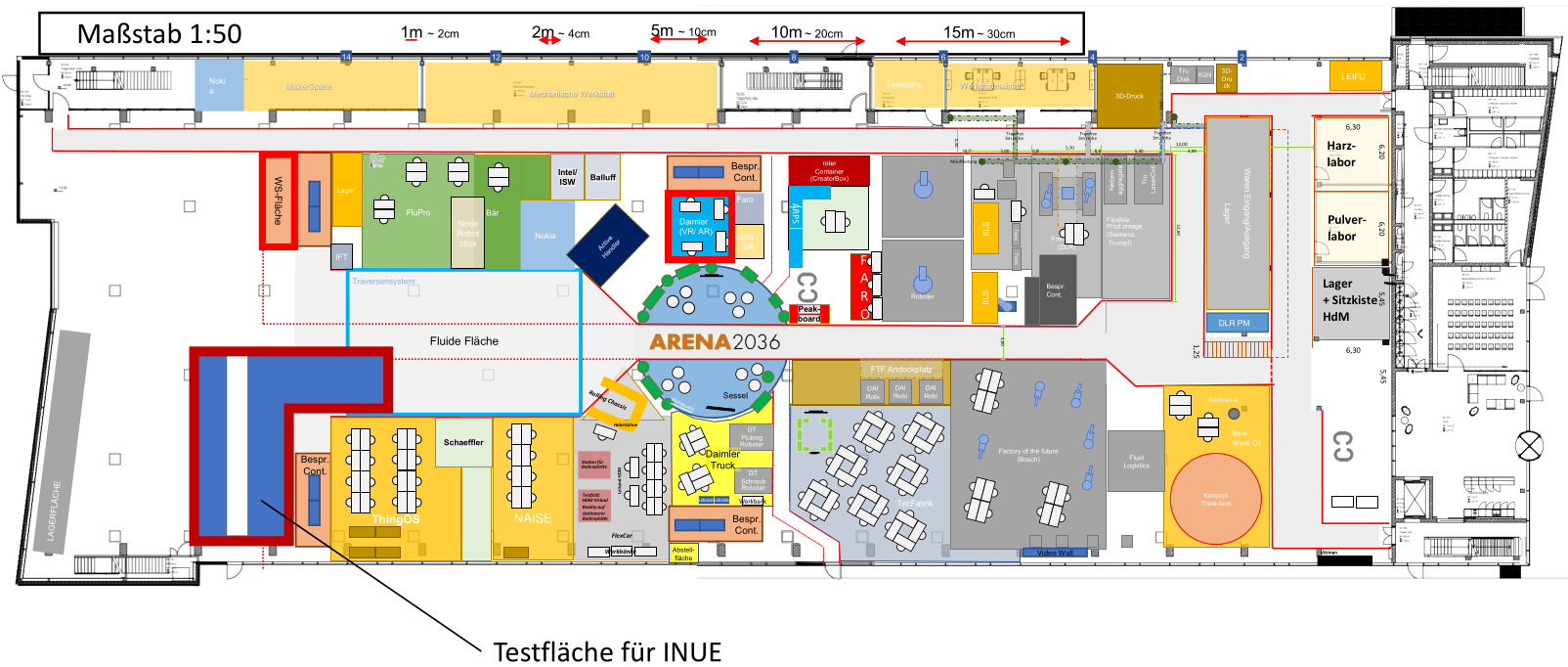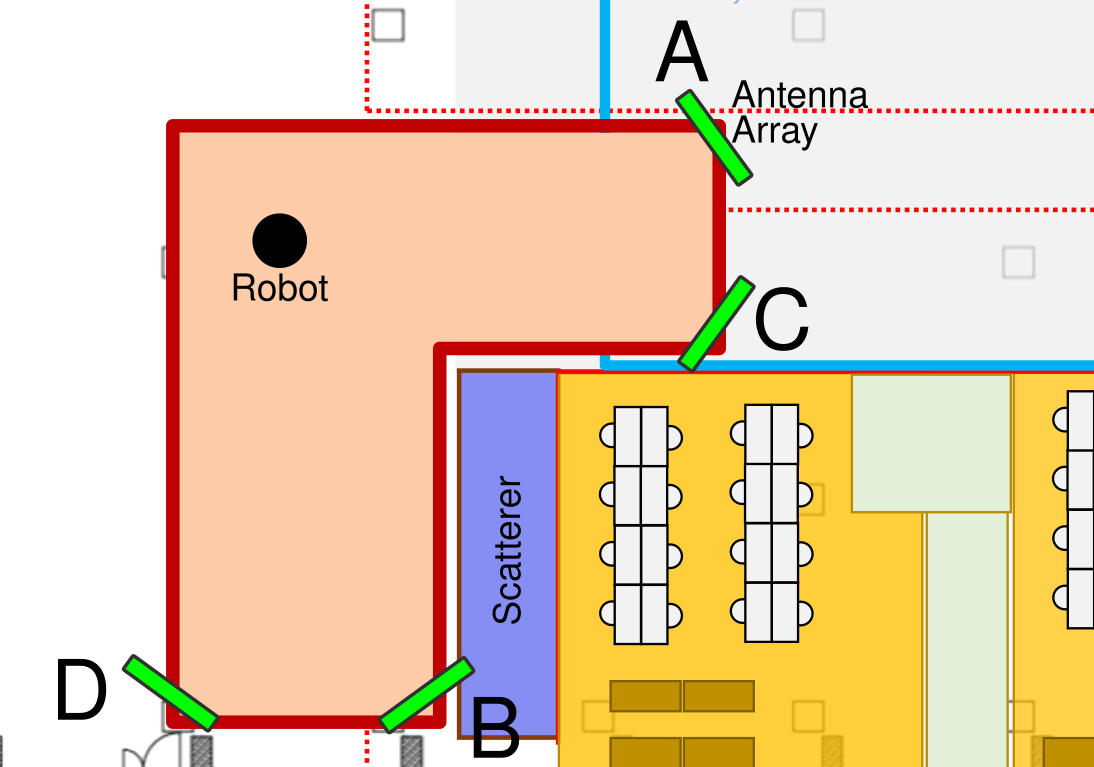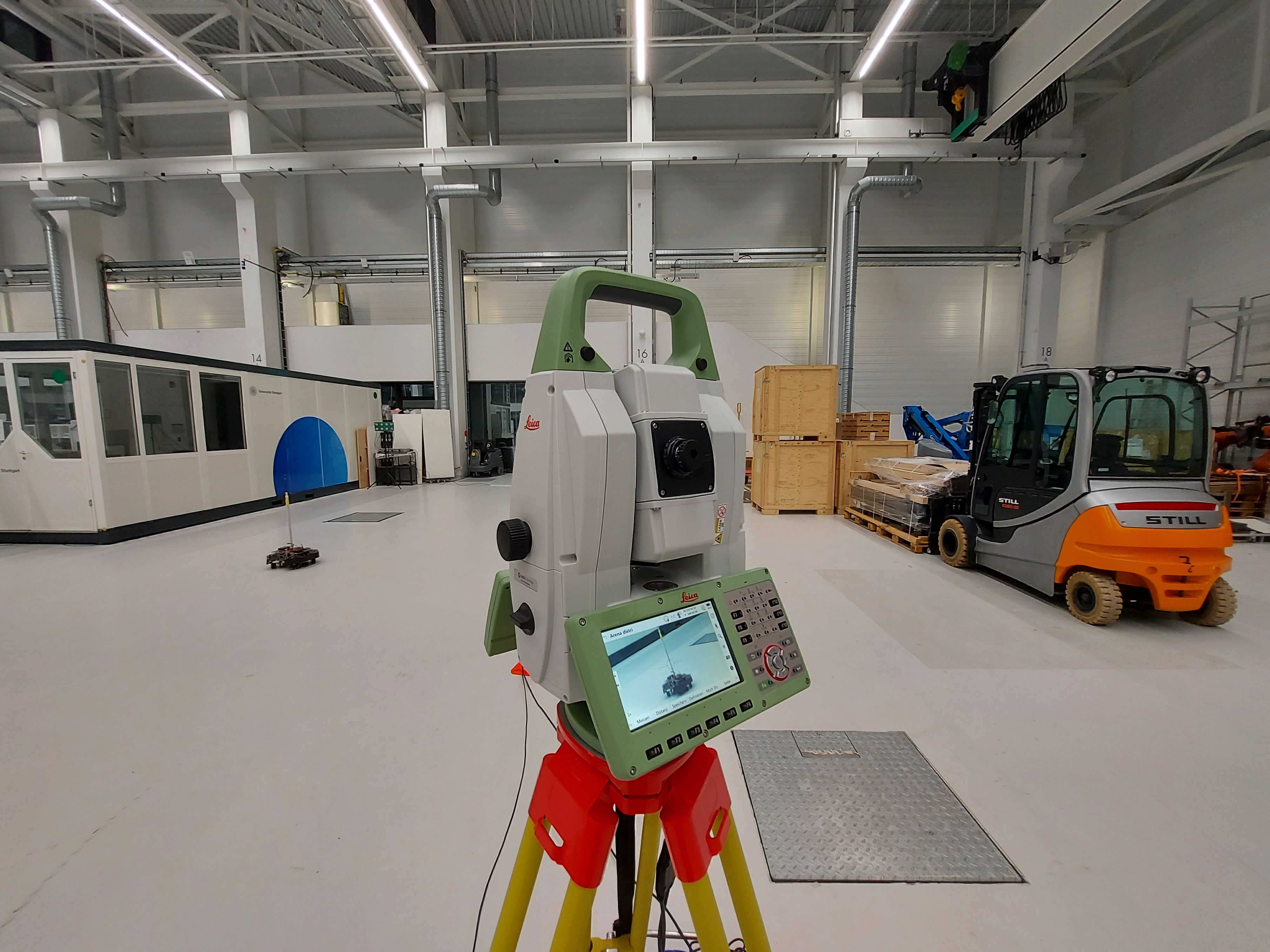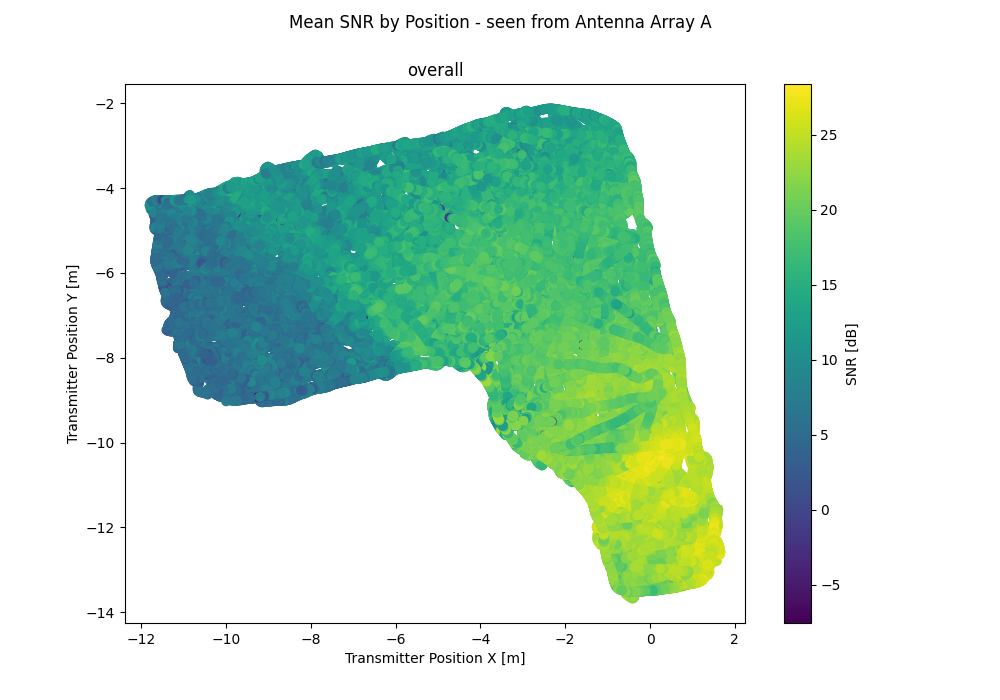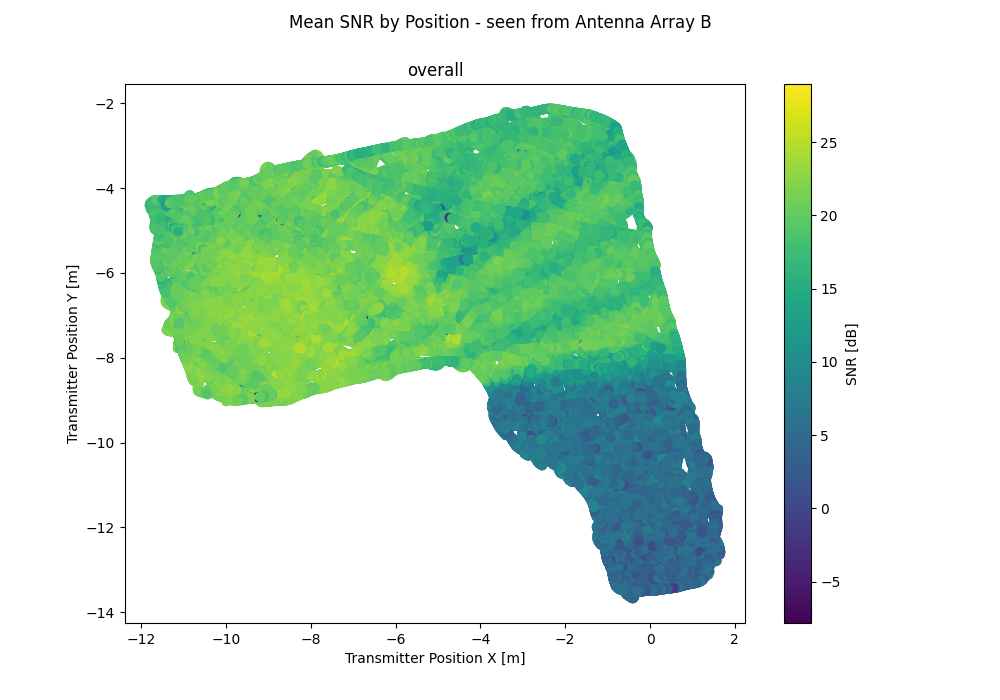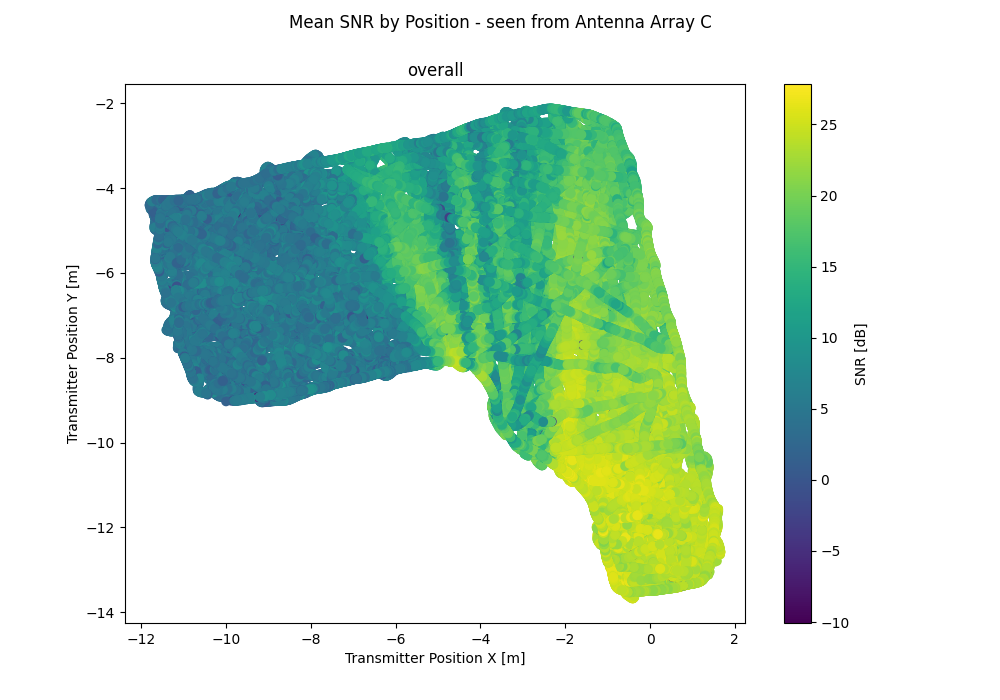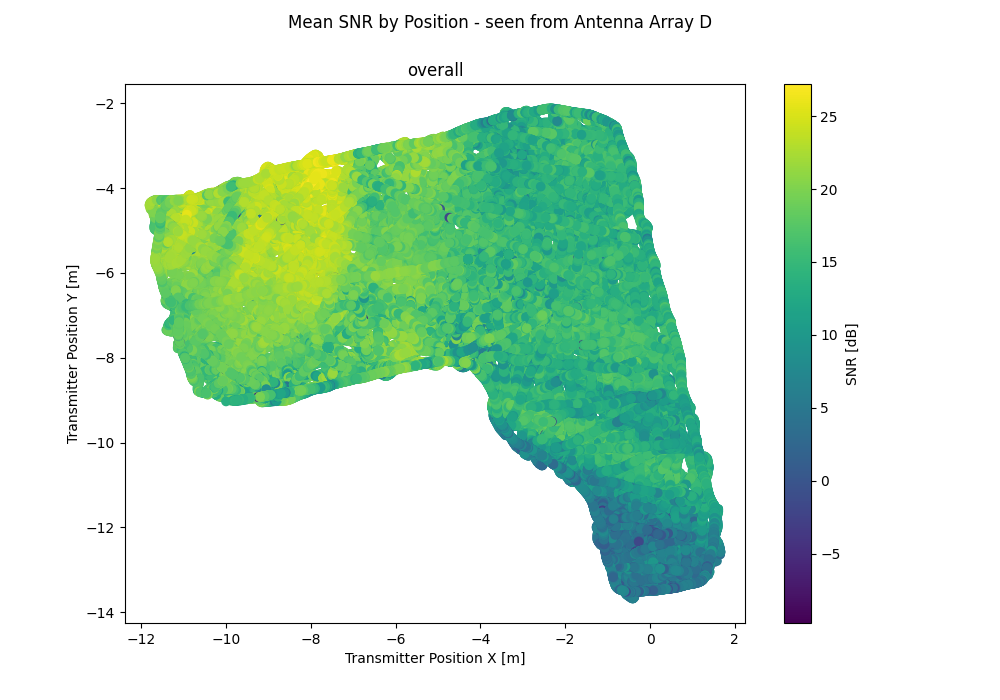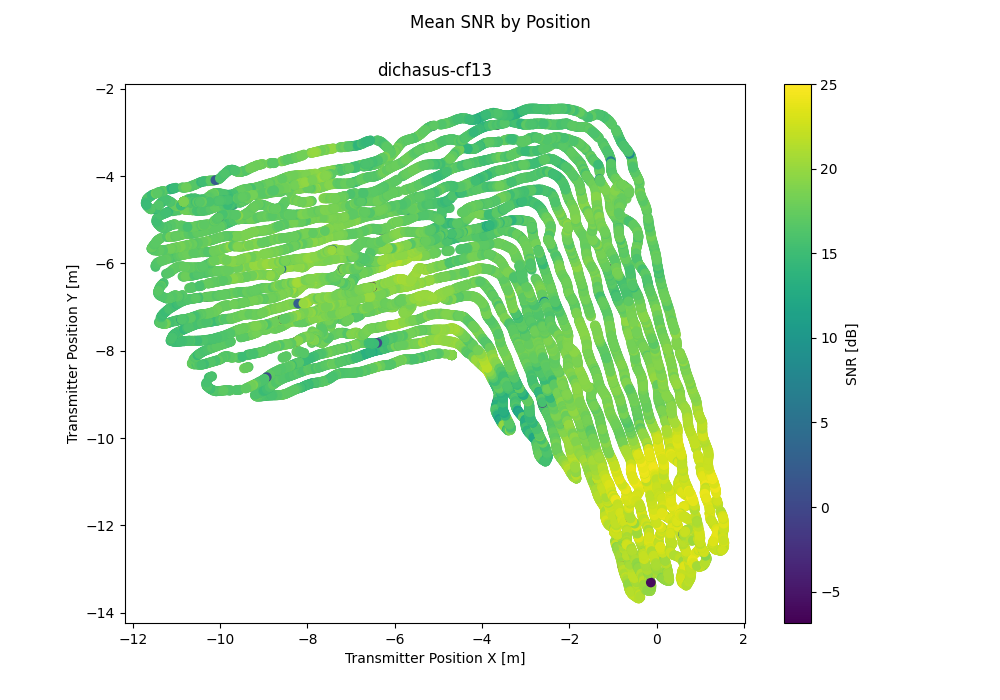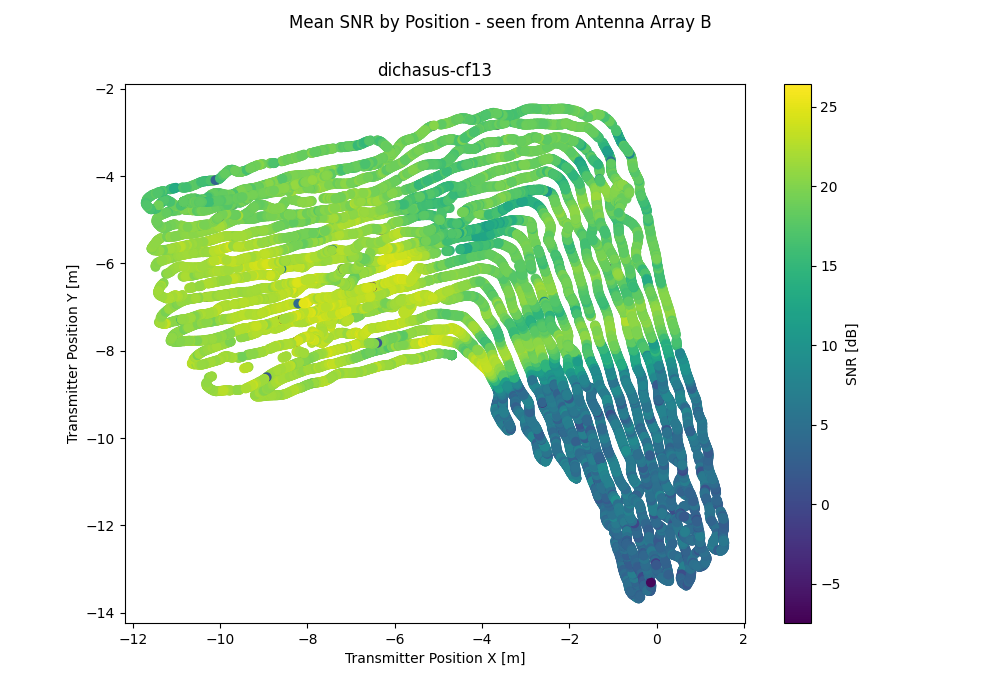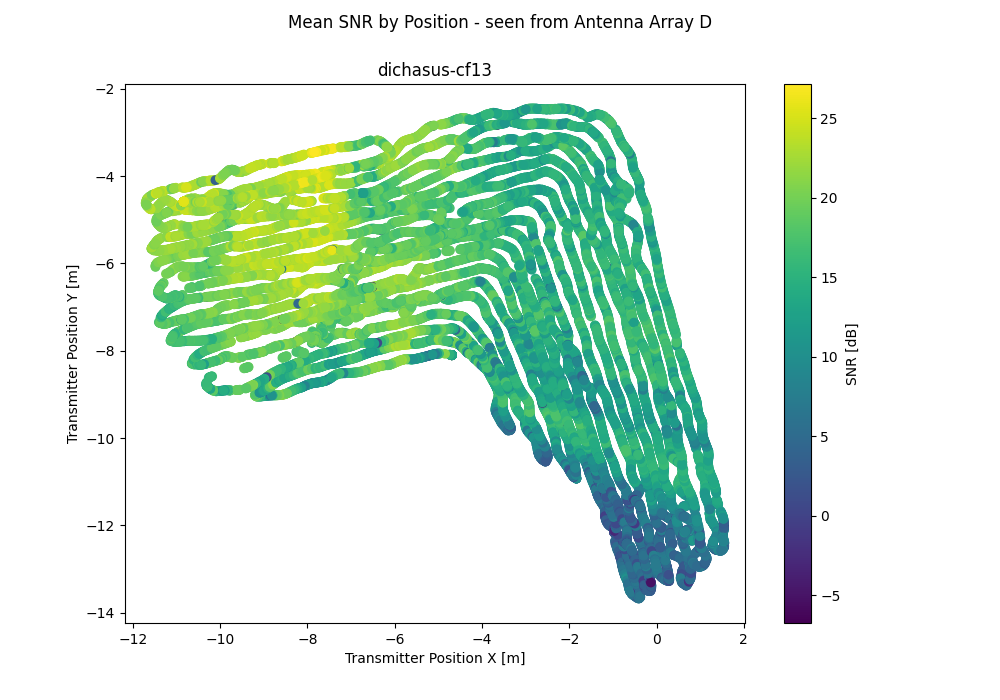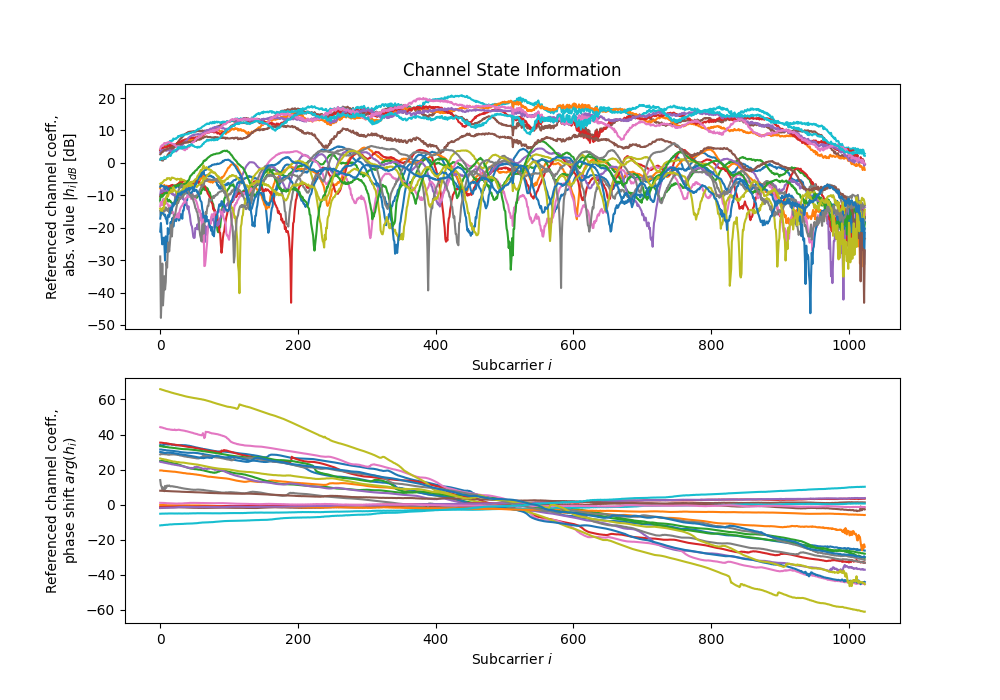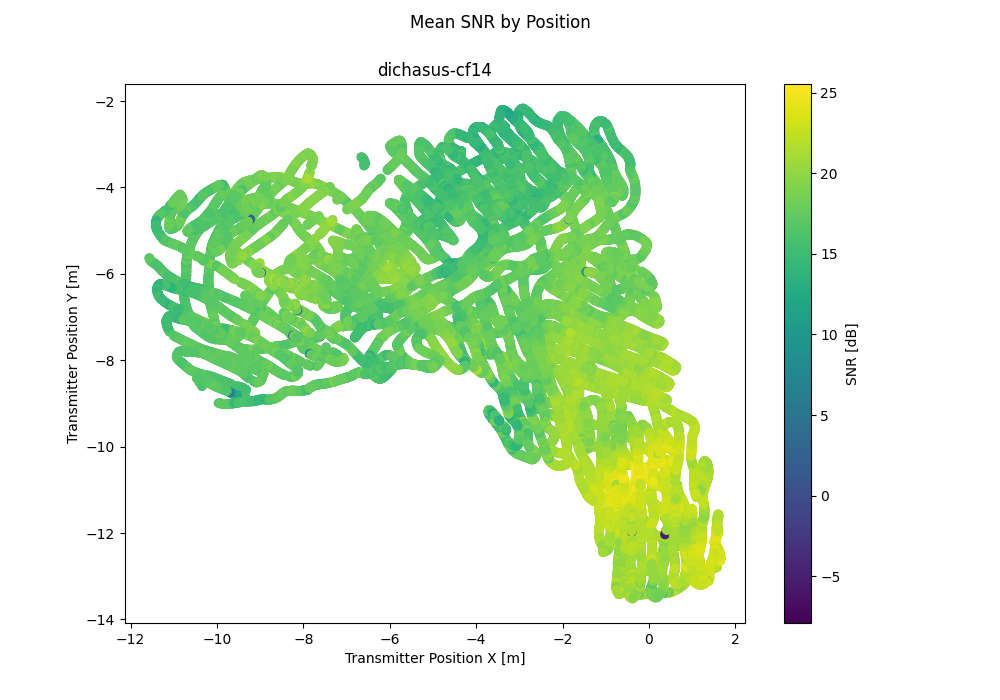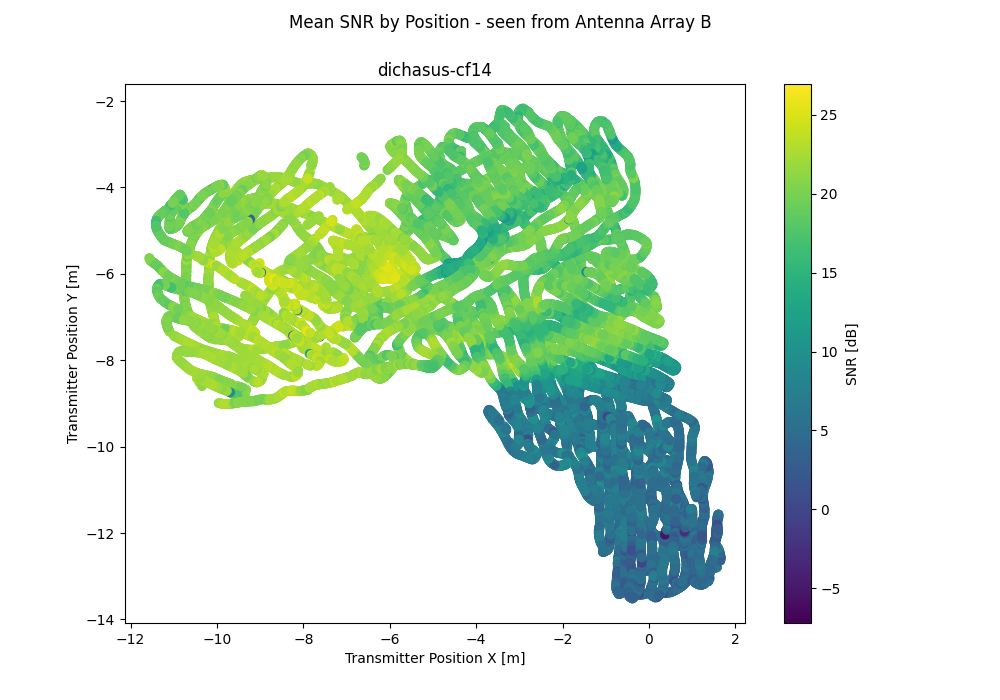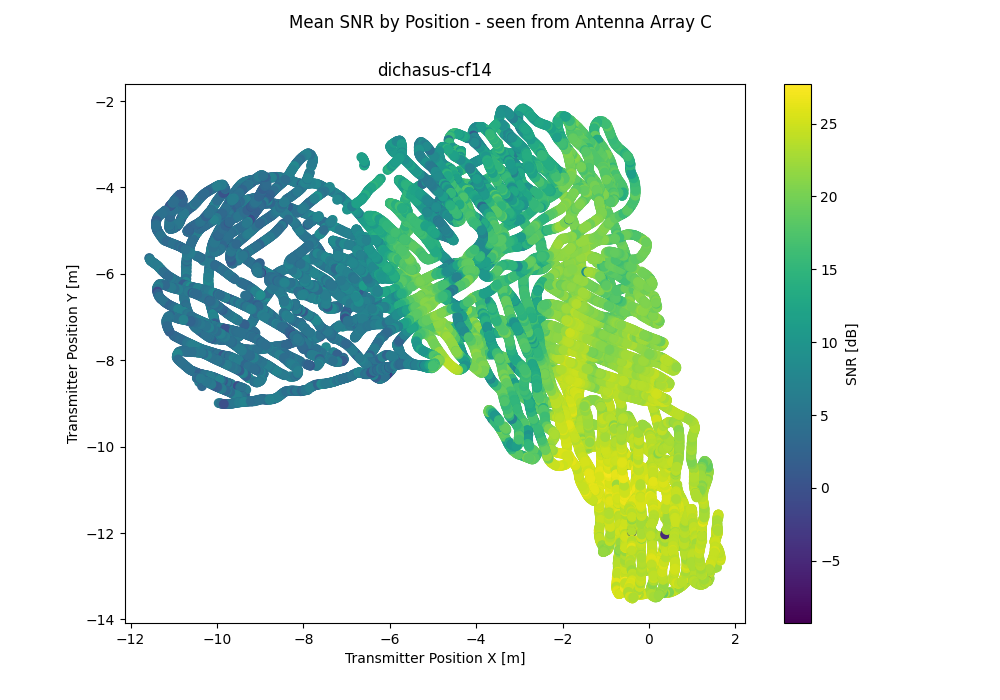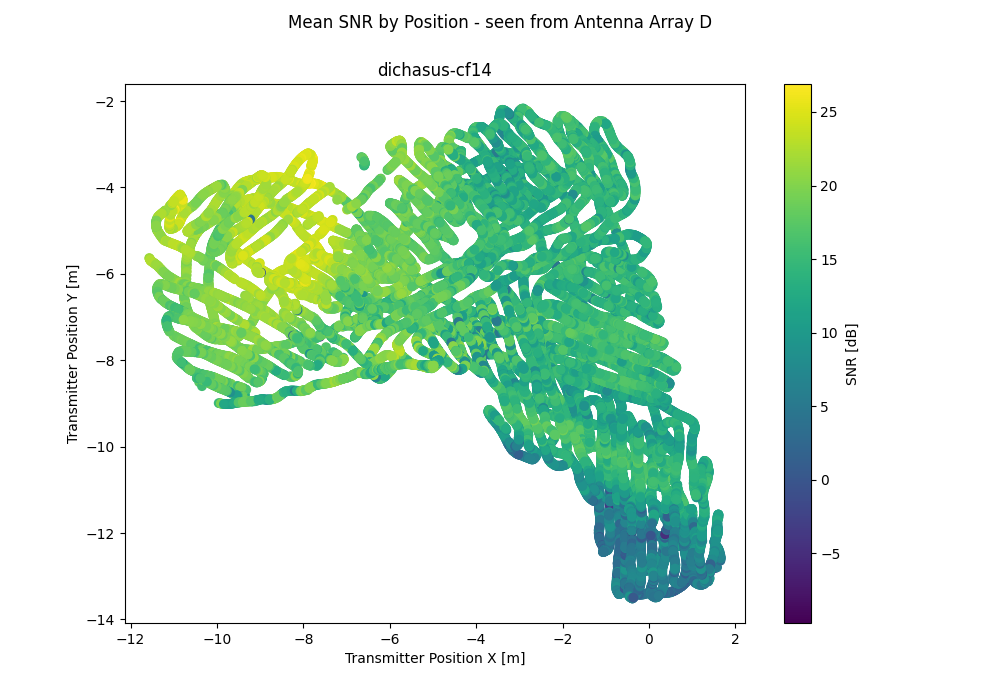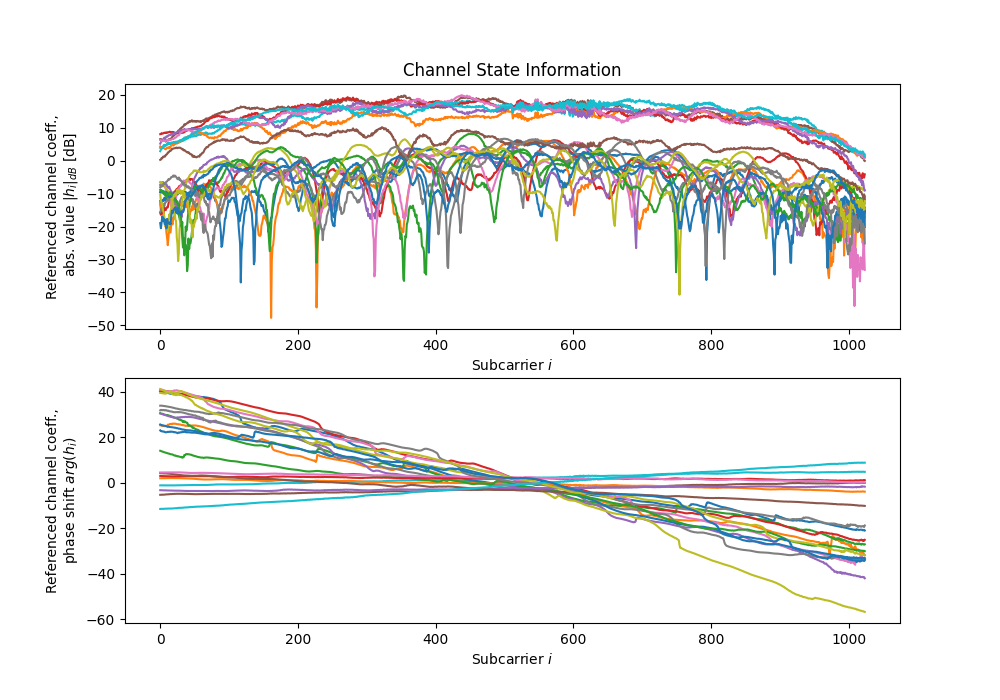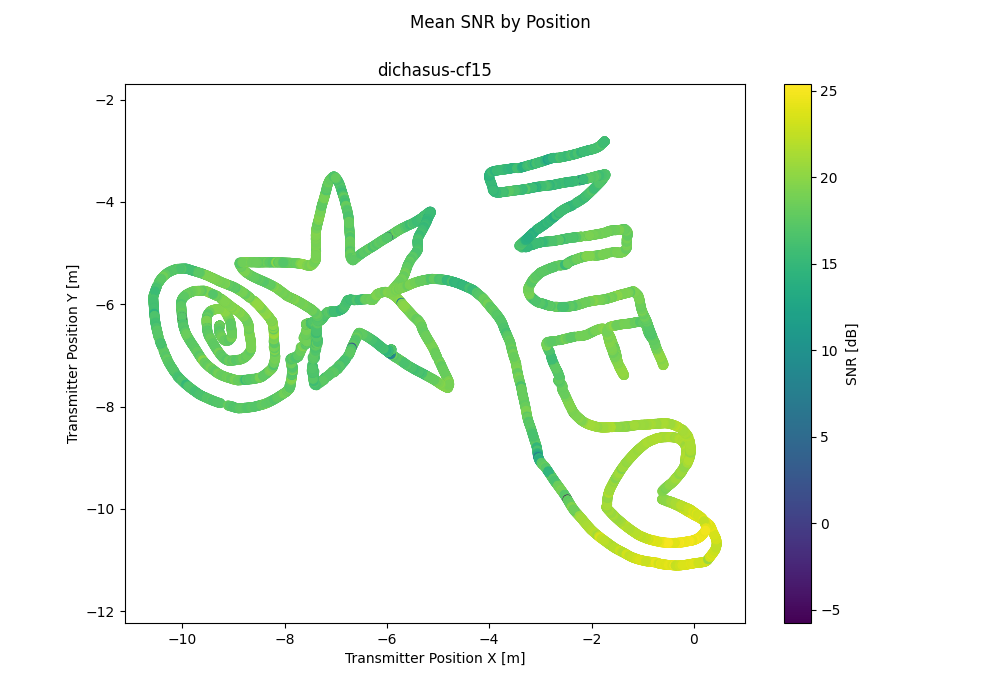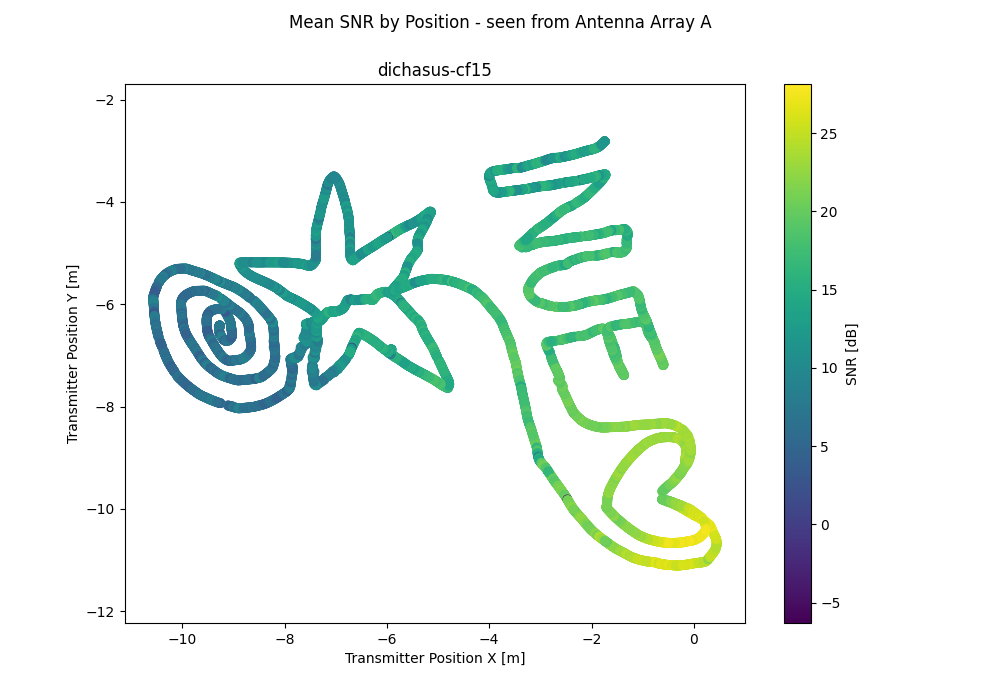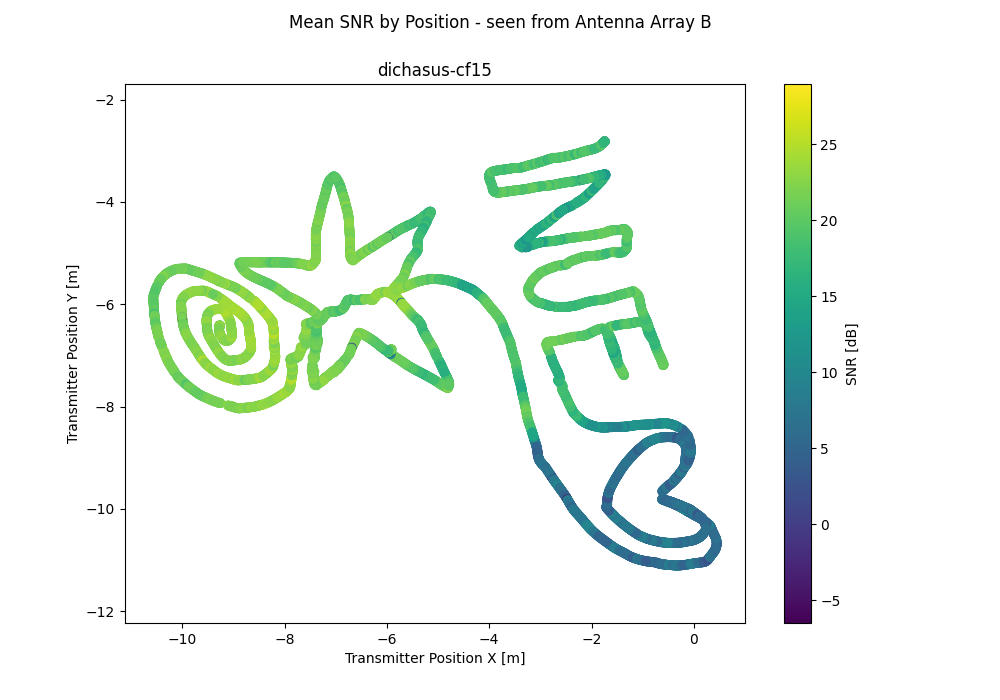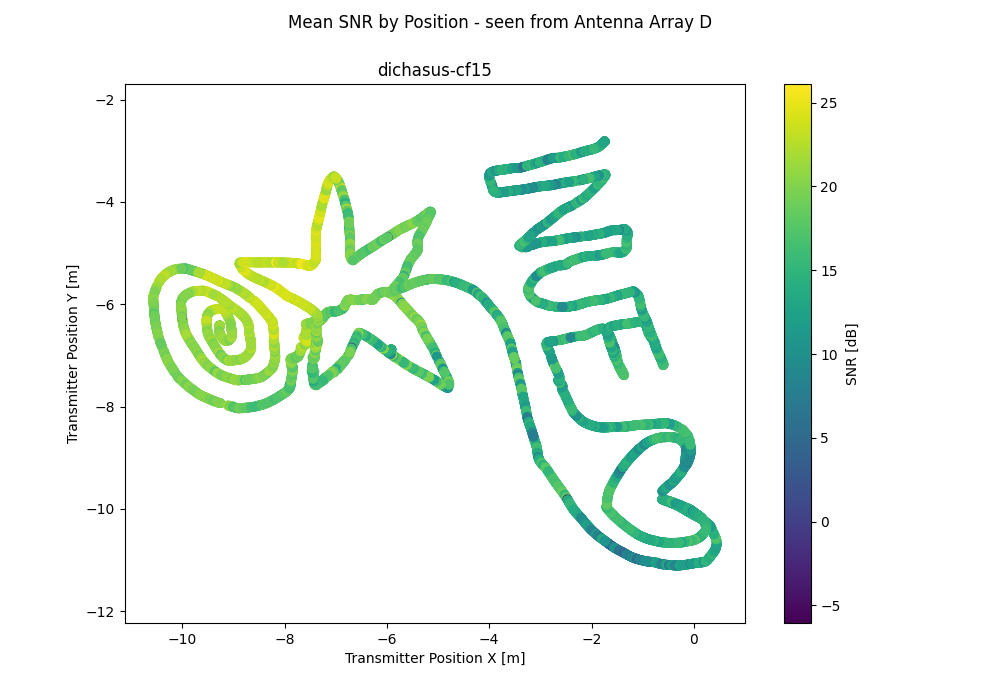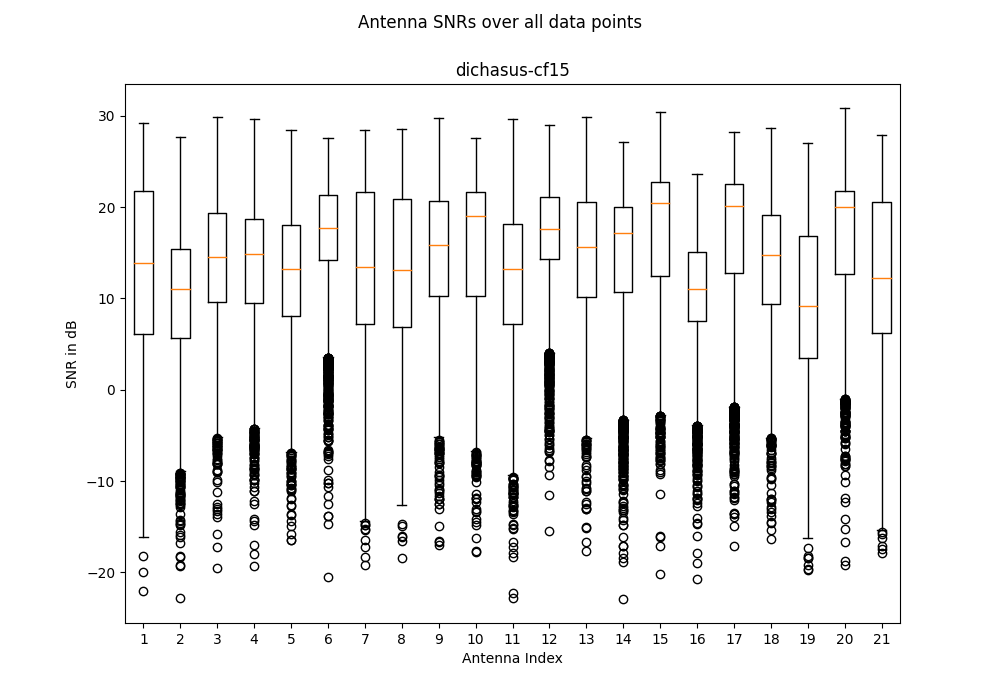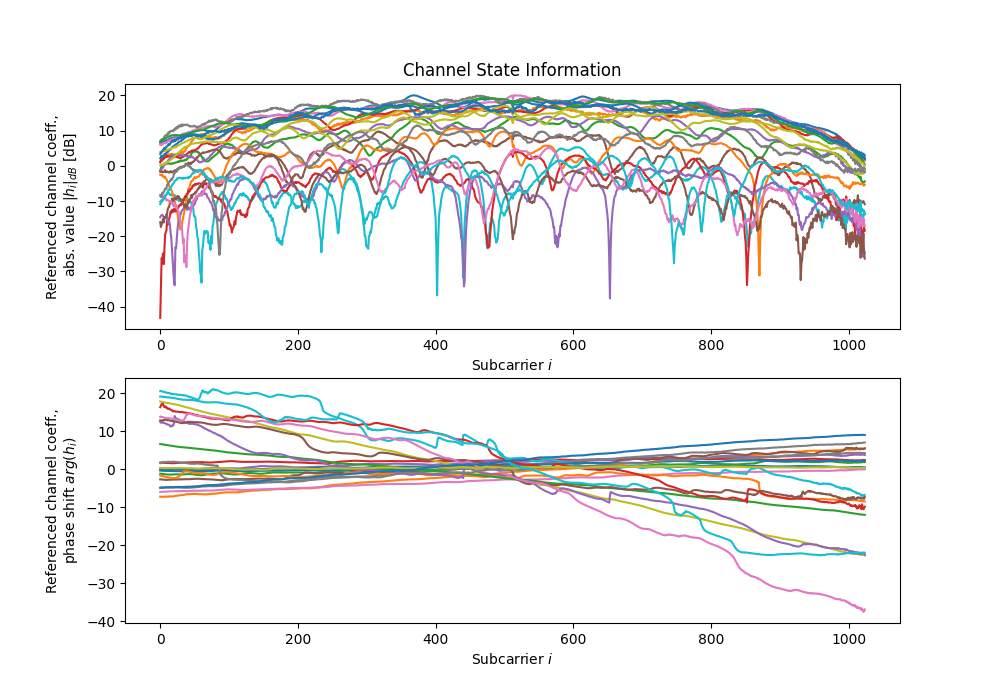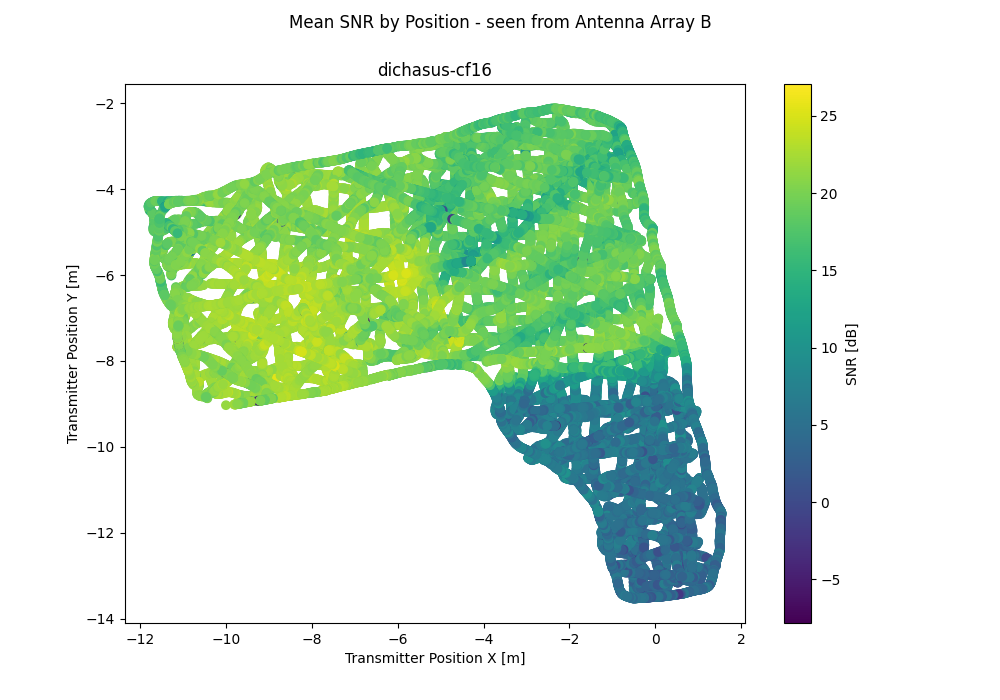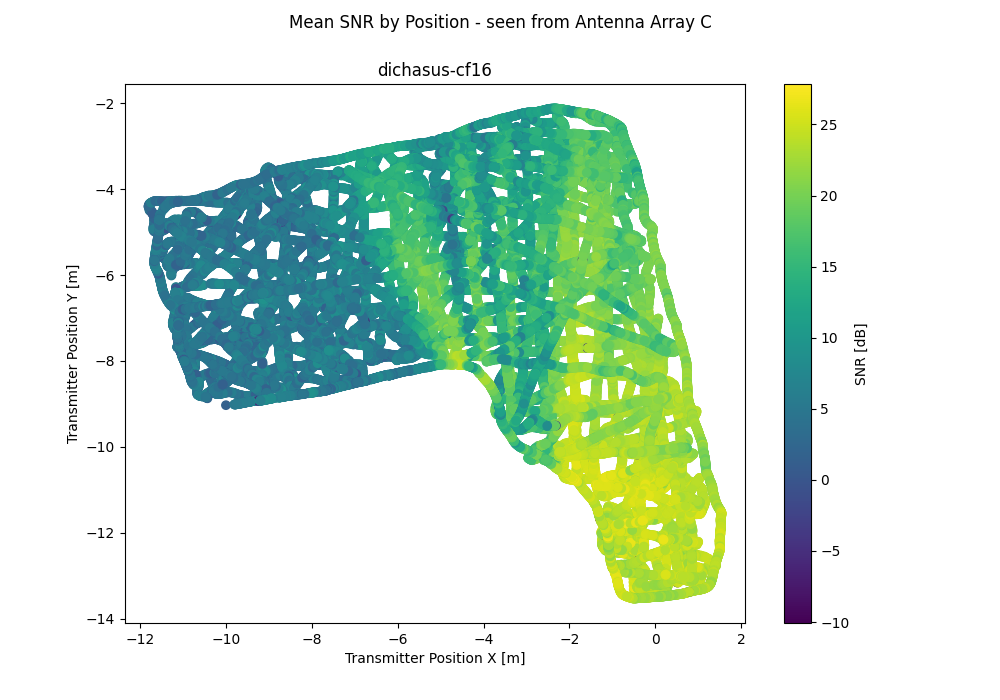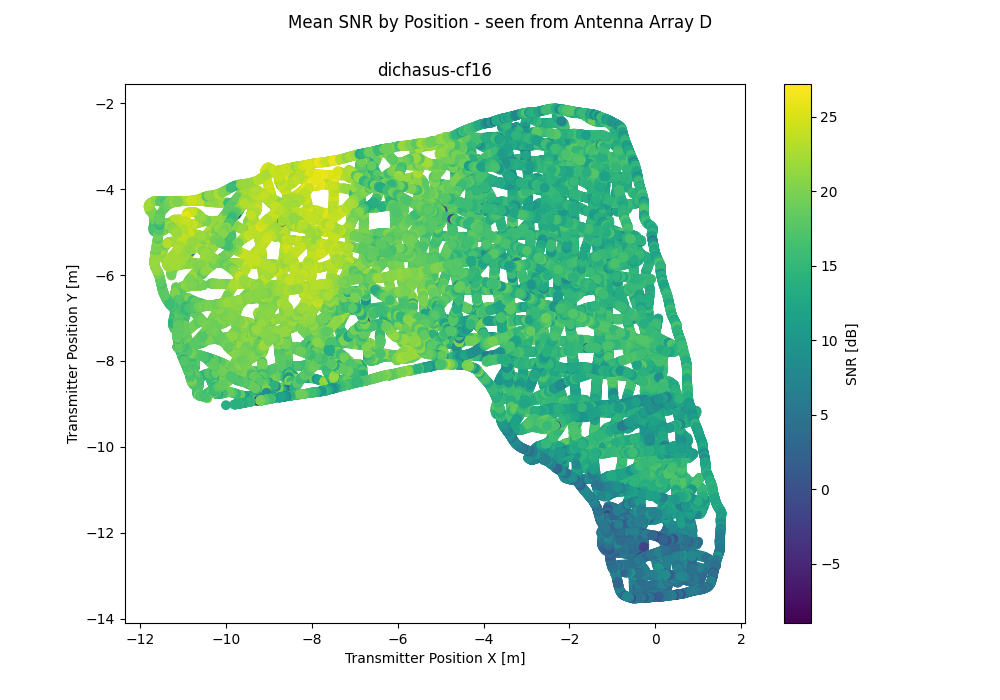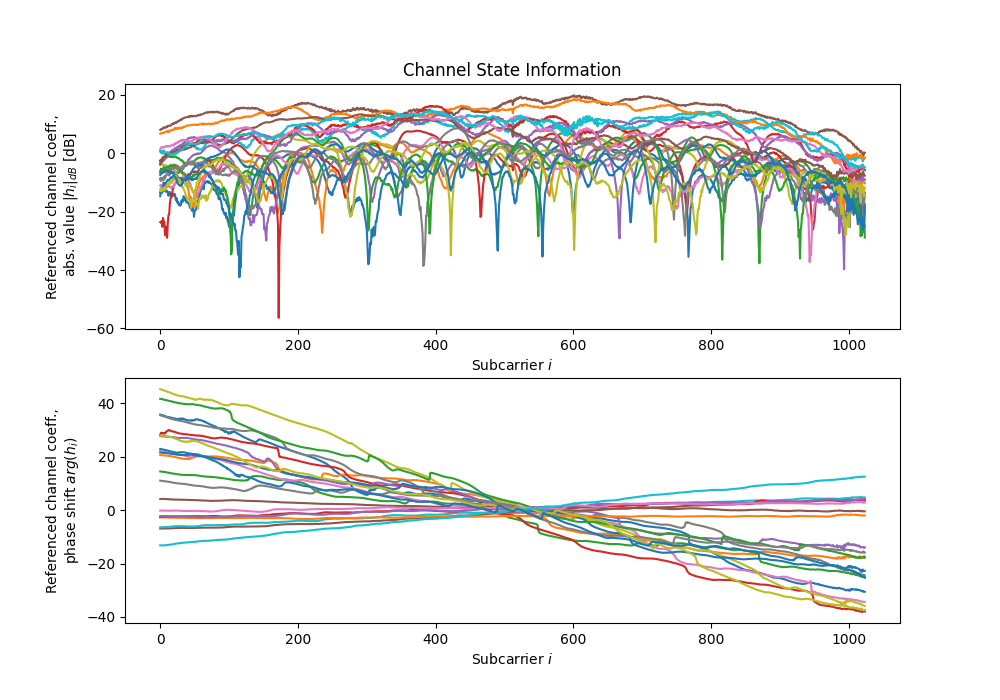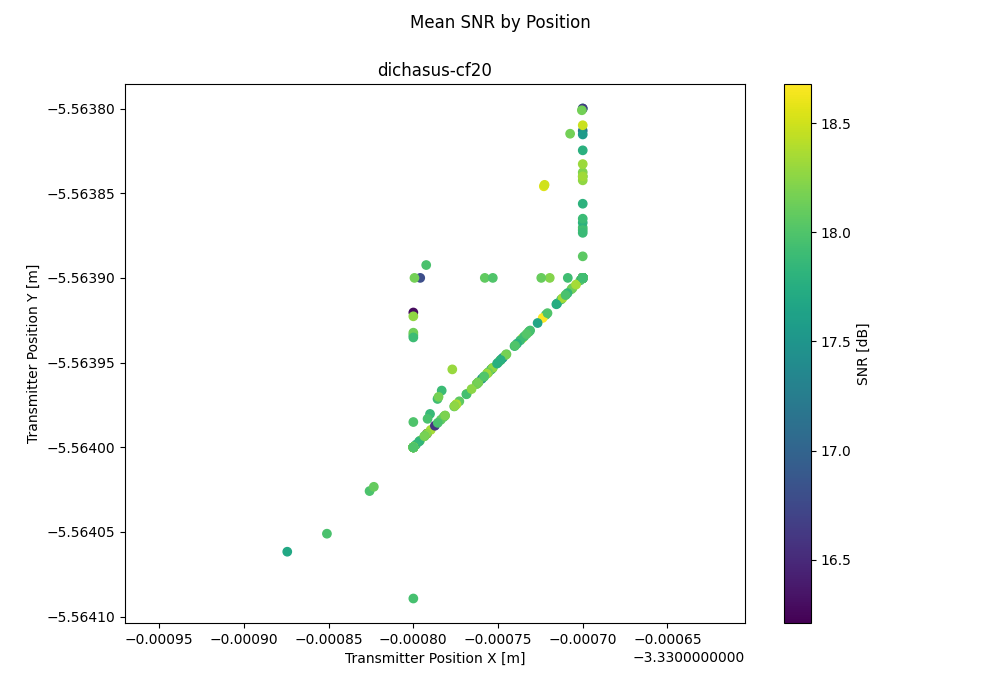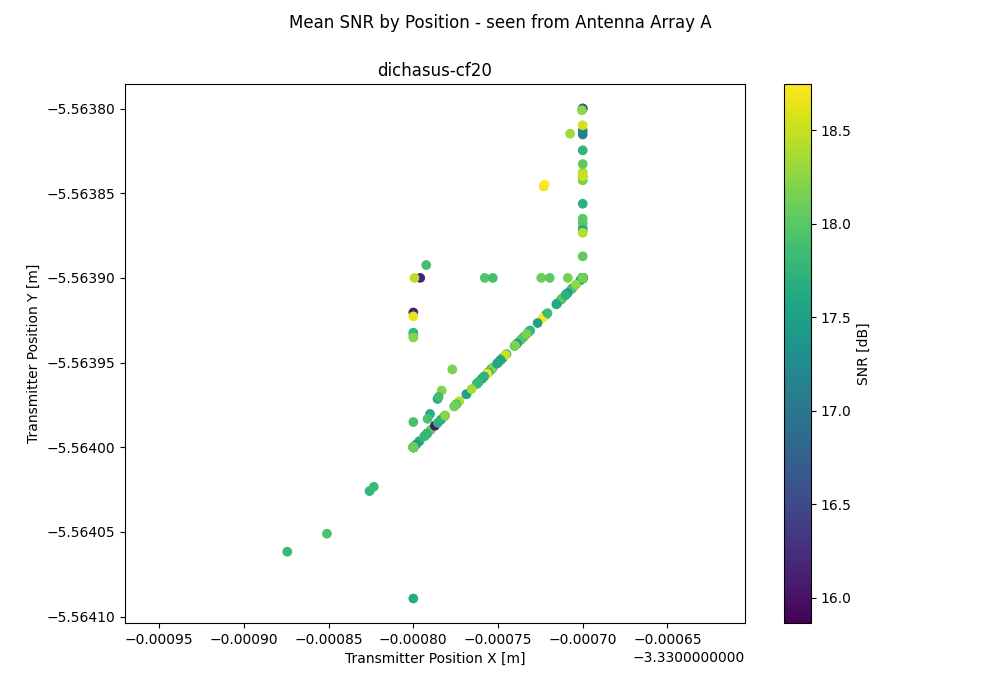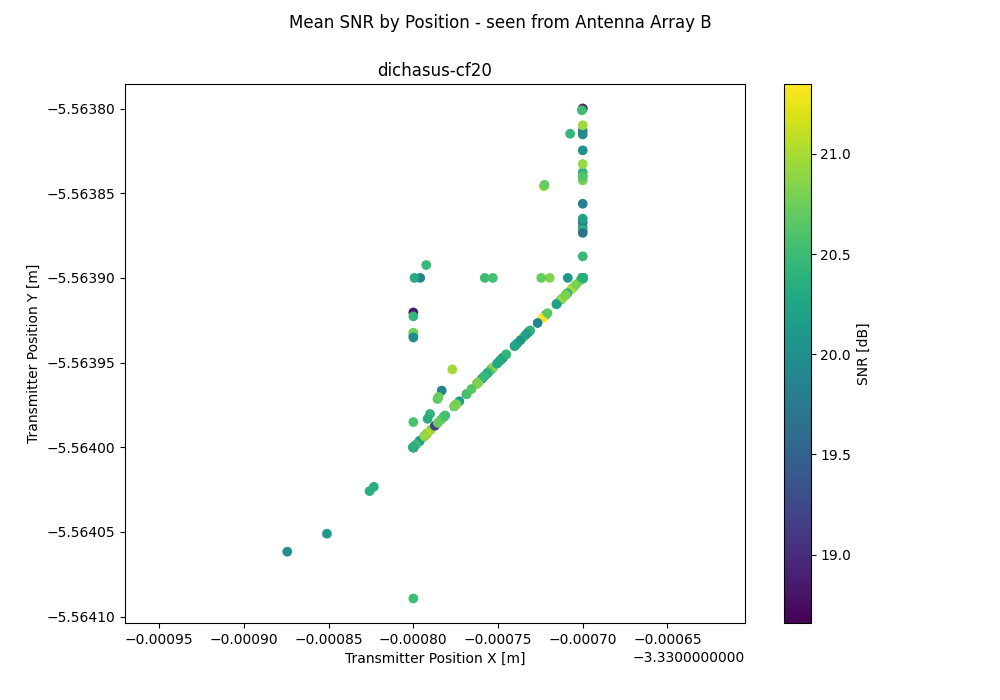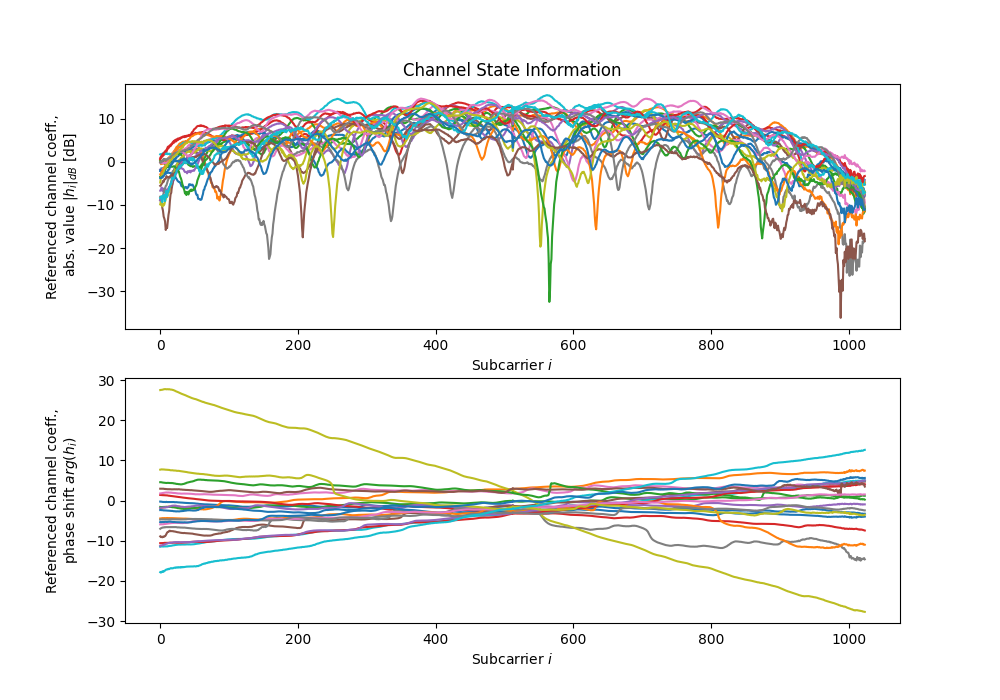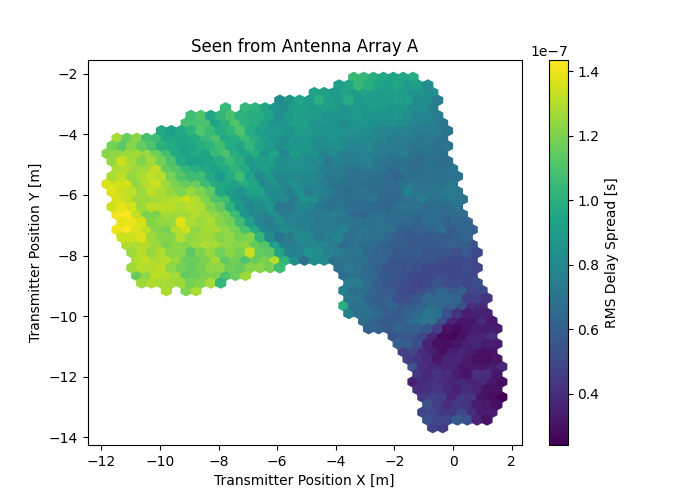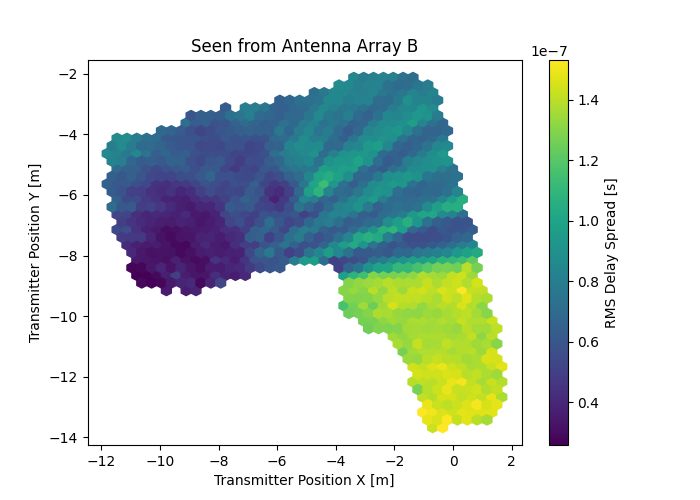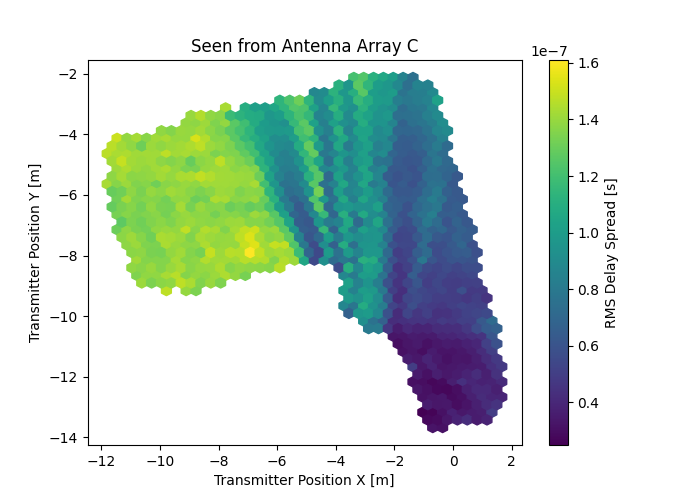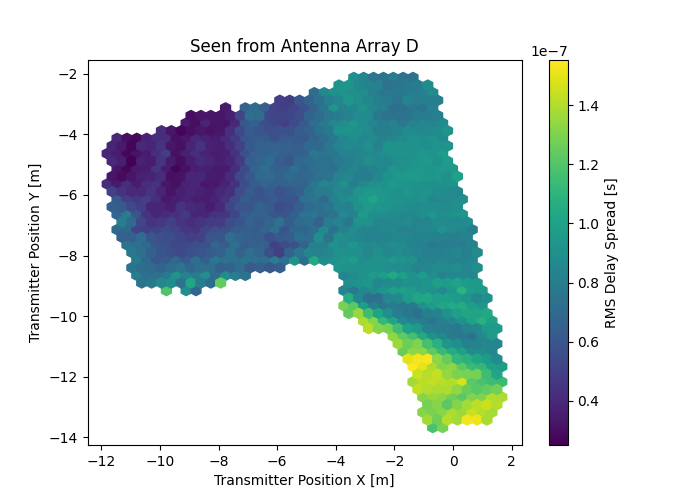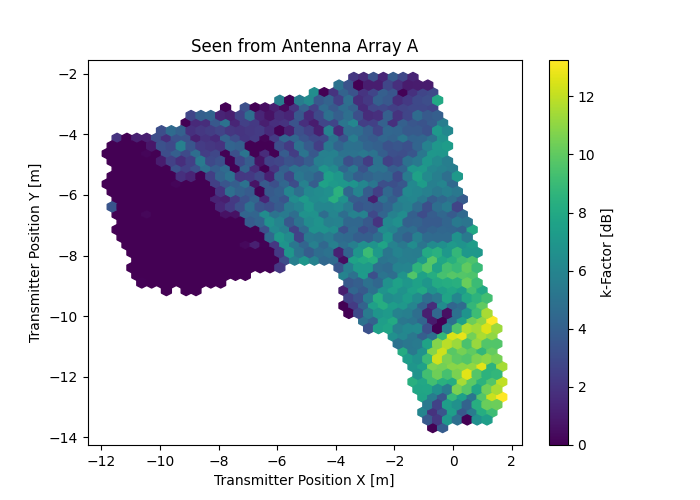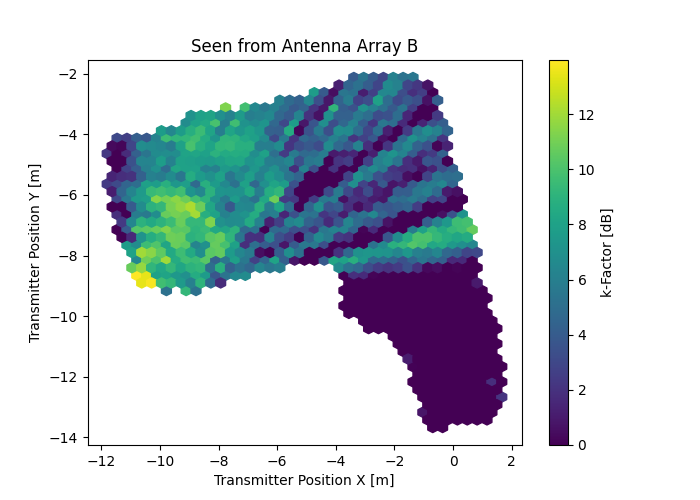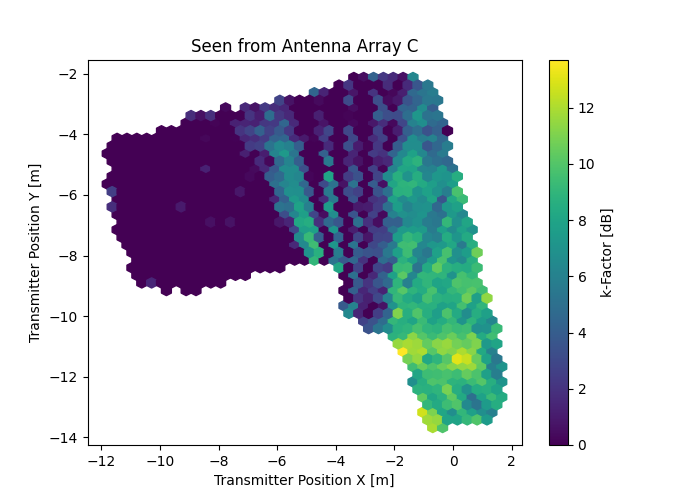dichasus-cf1x-part2 Dataset: Distributed Antenna Setup in Industrial Environment, Day 2, Second Part
Distributed antenna setup with line-of-sight (LoS) and non-line-of-sight (NLoS) channels, measured in the Arena2036 research factory campus environment.
Four antenna arrays with 8 antennas each distributed at the corners of an L-shaped area with a scatterer in between. Due to a technical problem, 11 antennas (part of arrays B, C and D) are missing from the dataset.
50.000 MHz
Signal Bandwidth
1024
OFDM Subcarriers
128091
Data Points
6427.3 s
Total Duration
22.1 GB
Total Download Size
21
Number of Antennas
Indoor
Type of Environment
1.272000 GHz
Carrier Frequency
Distributed
Antenna Setup
3D Tachymeter
Position-Tagged
Experiment Setup
Data Analysis
Antenna Configuration
Antenna 1: Antenna Array A
| 3 | 1 | 10 | 12 |
| 17 | 2 | 4 | 8 |
Antenna 2: Antenna Array B
| 14 | 9 | ||
| 19 | 13 | 16 |
Antenna 3: Antenna Array C
| 0 | 6 | ||
| 7 | 20 | 18 |
Antenna 4: Antenna Array D
| 5 | |||
| 15 | 11 |
Python: Import with TensorFlow
#!/usr/bin/env python3
import tensorflow as tf
raw_dataset = tf.data.TFRecordDataset(["tfrecords/dichasus-cf13.tfrecords", "tfrecords/dichasus-cf14.tfrecords", "tfrecords/dichasus-cf15.tfrecords", "tfrecords/dichasus-cf16.tfrecords", "tfrecords/dichasus-cf20.tfrecords"])
feature_description = {
"cfo": tf.io.FixedLenFeature([], tf.string, default_value = ''),
"csi": tf.io.FixedLenFeature([], tf.string, default_value = ''),
"gt-interp-age-tachy": tf.io.FixedLenFeature([], tf.float32, default_value = 0),
"pos-tachy": tf.io.FixedLenFeature([], tf.string, default_value = ''),
"snr": tf.io.FixedLenFeature([], tf.string, default_value = ''),
"time": tf.io.FixedLenFeature([], tf.float32, default_value = 0),
}
def record_parse_function(proto):
record = tf.io.parse_single_example(proto, feature_description)
# Measured carrier frequency offset between MOBTX and each receive antenna.
cfo = tf.ensure_shape(tf.io.parse_tensor(record["cfo"], out_type = tf.float32), (21))
# Channel coefficients for all antennas, over all subcarriers, real and imaginary parts
csi = tf.ensure_shape(tf.io.parse_tensor(record["csi"], out_type = tf.float32), (21, 1024, 2))
# Time in seconds to closest known tachymeter position. Indicates quality of linear interpolation.
gt_interp_age_tachy = tf.ensure_shape(record["gt-interp-age-tachy"], ())
# Position of transmitter determined by a tachymeter pointed at a prism mounted on top of the antenna, in meters (X / Y / Z coordinates)
pos_tachy = tf.ensure_shape(tf.io.parse_tensor(record["pos-tachy"], out_type = tf.float64), (3))
# Signal-to-Noise ratio estimates for all antennas
snr = tf.ensure_shape(tf.io.parse_tensor(record["snr"], out_type = tf.float32), (21))
# Timestamp since start of measurement campaign, in seconds
time = tf.ensure_shape(record["time"], ())
return cfo, csi, gt_interp_age_tachy, pos_tachy, snr, time
dataset = raw_dataset.map(record_parse_function, num_parallel_calls = tf.data.experimental.AUTOTUNE)
# Optional: Cache dataset in RAM for faster training
dataset = dataset.cache()Reference Channel Compensation
For this dataset, we are able to provide estimated antenna-specific carrier phase and sampling time offsets. These offsets occur due to the fact that the reference transmitter channel is not perfectly frequency-flat. To learn more about why these offsets occur and about their compensation, visit our offset calibration tutorial on this topic. Note that the estimates provided here are "best-effort" calculations. The phase and time offsets between antennas in the same array are usually very accurate, but for antennas that are spaced far apart, the results may be less precise. The offset are constant over the complete dataset.How to Cite
Please refer to the home page for information on how to cite any of our datasets in your research. For this dataset in particular, you may use the following BibTeX:
@data{dataset-dichasus-cf1x-part2,
author = {Euchner, Florian and Gauger, Marc},
publisher = {DaRUS},
title = {{CSI Dataset dichasus-cf1x-part2: Distributed Antenna Setup in Industrial Environment, Day 2, Second Part}},
doi = {doi:10.18419/darus-3151},
url = {https://doi.org/doi:10.18419/darus-3151},
year = {2022}
}Download
This dataset consists of 5 files. Descriptions of these files as well as download links are provided below.
dichasus-cf13
dichasus-cf14
dichasus-cf15
dichasus-cf16
Derived Channel Statistics
Channel statistics such as delay spread, k-Factor and path loss exponent are a good way to characterize a wireless channel measurement and to parametrize a channel model. Using estimation algorithms contributed by Janina Sanzi, we automatically extract the following channel statistics from the measured datasets:


